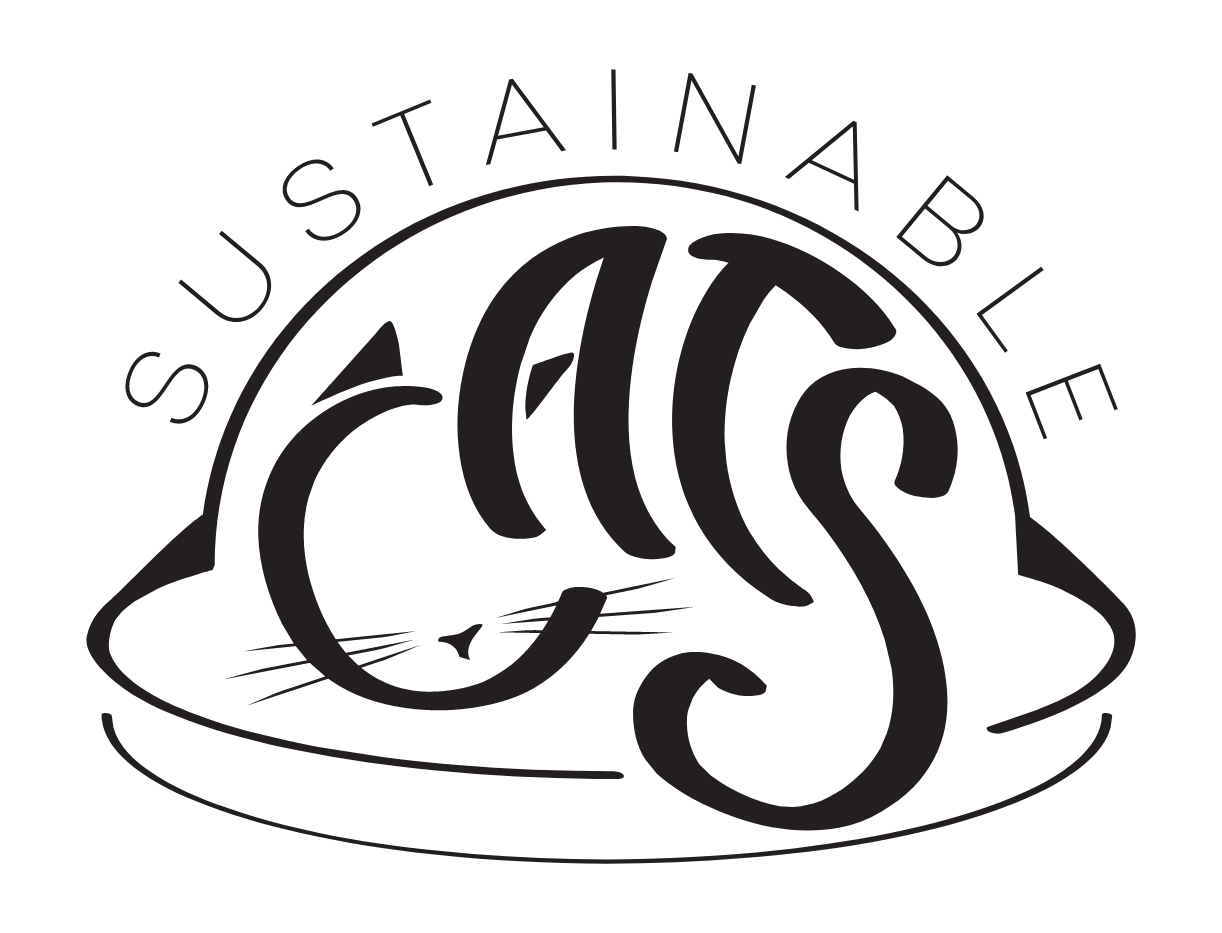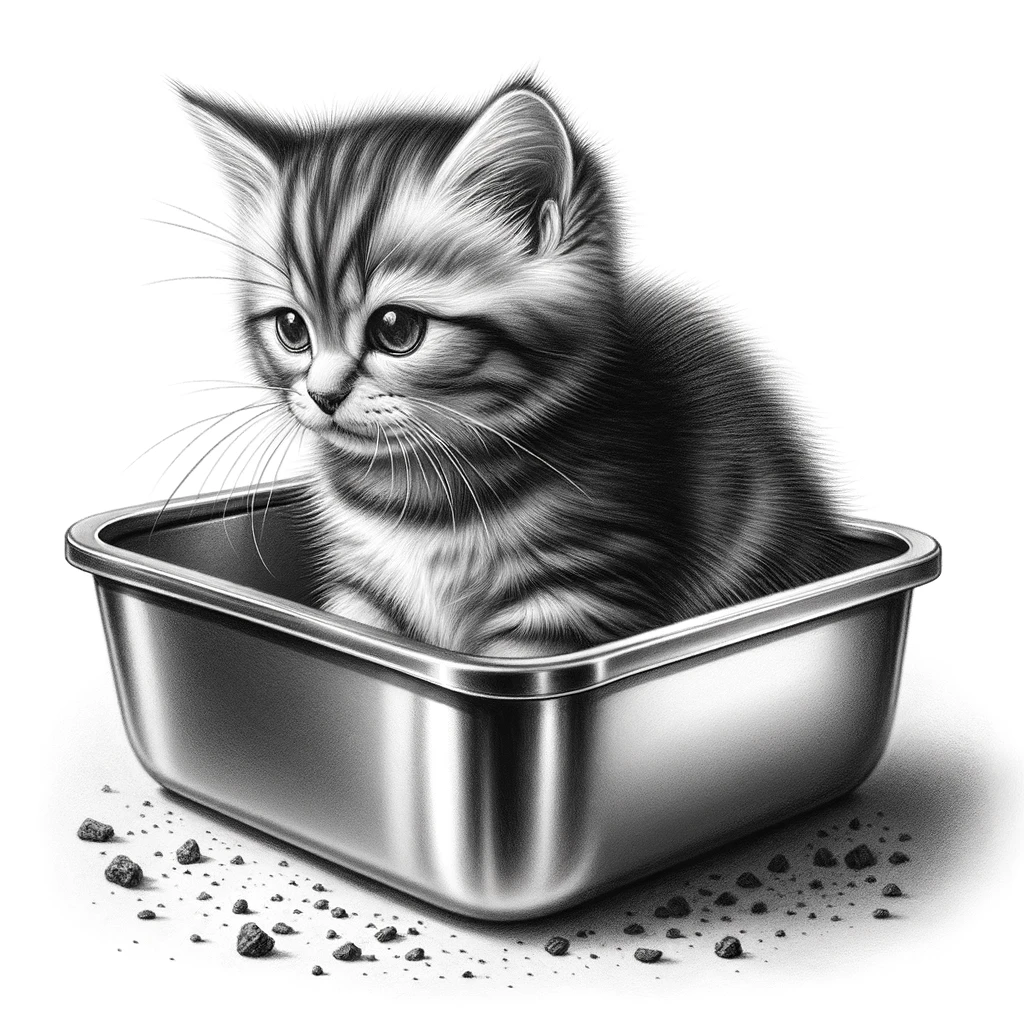When it comes to sustainable cat ownership, choosing the suitable litter for your furry friend is crucial. One standard option that cat owners consider is non-clumping cat litter.
But is it a good choice for kittens? Let’s explore the pros and cons of non-clumping cat litter in the context of sustainable cat ownership.
The Benefits of Non-Clumping Cat Litter
When choosing the suitable litter for your kitten, non-clumping cat litter offers several advantages. While sustainability is an important consideration, let’s focus on the benefits of non-clumping litter specifically for kittens:
Safety
Kittens are curious and tend to explore their surroundings with their mouths. Non-clumping cat litter is safer for kittens as it doesn’t form solid clumps that can be accidentally ingested. This reduces the risk of potential health issues and ensures the well-being of your little furry friend.
Gentle on Paws
Non-clumping cat litter typically has a softer texture compared to clumping litter. This makes it more comfortable for kittens to walk on and dig in. The gentle texture of non-clumping litter is especially beneficial for young kittens developing their coordination and motor skills.
Reduced Dust
Non-clumping cat litter tends to produce less dust compared to clumping litter. This is particularly important for kittens, as their developing respiratory systems may be more sensitive to airborne particles. You can provide your kitten with a cleaner and healthier environment by choosing non-clumping litter.
Easy Cleanup
Non-clumping cat litter is easier to clean and maintain. Since it doesn’t form solid clumps, you can scoop out the solid waste and replace the litter. This makes the cleanup process quicker and more convenient, allowing you to spend quality time with your playful kitten.
Cost-Effective
Non-clumping cat litter is often more affordable than clumping litter. This can benefit kitten owners who may go through litter more quickly during the early stages of their kitten’s life. By choosing a cost-effective option, you can provide a comfortable and hygienic litter box environment without breaking the bank.
In conclusion, non-clumping cat litter offers several benefits, specifically for kittens. Its safety, gentle texture, reduced dust, easy cleanup, and cost-effectiveness make it an ideal choice for young and curious kittens. While sustainability is an important consideration, these advantages prioritise the well-being and comfort of your kitten. By opting for non-clumping cat litter, you can provide a safe and enjoyable litter box experience for your adorable little companion.
Considerations for Non-Clumping Cat Litter
While non-clumping cat litter offers several benefits, it’s essential to consider some factors before deciding. Here are a few considerations to keep in mind:
Odor Control of Non-Clumping Cat Litter
Non-clumping cat litter may not be as effective in controlling odours as clumping litter. If odour control is a priority for you, consider alternative options or diligently maintain cleanliness by scooping the litter box more frequently. Using odour-absorbing additives or deodorisers can also help mitigate any potential odour issues.
Absorption and Maintenance
Non-clumping cat litter may require more frequent changing as it doesn’t absorb moisture as effectively as clumping litter. This means you may need to replace the litter more often, which can be less cost-effective and generate more waste. Consider your budget and time availability for litter box maintenance when choosing non-clumping litter.
Preference of the Cat
Ultimately, the choice of litter depends on your kitten’s preference. Some kittens may prefer the texture and feel of clumping litter, while others may be perfectly content with non-clumping litter. It’s essential to observe your kitten’s behaviour and adjust accordingly. Other options may be worth considering if your kitten is uncomfortable or avoids non-clumping litter.
Environmental Impact of Non-Clumping Cat Litter
While non-clumping cat litter is generally more environmentally friendly than clumping litter, it’s still important to consider the specific brand or type of litter you choose. Look for options that use sustainable materials and manufacturing processes. Consider whether the litter is biodegradable or compostable, and check if it can be disposed of in an eco-friendly manner.
Allergies and Sensitivities to Non-Clumping Cat Litter
Some kittens may have allergies or sensitivities to certain materials or fragrances in non-clumping cat litter. If your kitten shows discomfort, such as excessive sneezing or itching, it’s essential to consult your veterinarian. They can help determine if the litter is causing any allergic reactions and recommend alternative options.
In conclusion, while non-clumping cat litter has benefits, it’s essential to consider factors such as odour control, absorption, your kitten’s preference, environmental impact, and any potential allergies or sensitivities. By taking these considerations into account, you can make an informed decision that ensures the comfort, health, and well-being of your kitten while also aligning with your sustainability goals.
Types of Non-Clumping Cat Litters and Their Appropriateness for Kittens
When selecting non-clumping cat litter for your kitten, it’s essential to consider the different types available and their suitability. Here are some common types of non-clumping cat litter and their appropriateness for young feline companions:
Recycled Paper Litter
Recycled paper litter, made from materials like newspaper or cardboard, is soft and gentle on kittens’ paws. It offers good absorbency and odour control. This litter is biodegradable and environmentally friendly. While generally safe for kittens, it’s crucial to monitor their behaviour to prevent ingestion of the litter.
Wood Pellet Litter
Wood pellet litter from compressed sawdust or wood fibres provides excellent absorbency and odour control. It is typically low in dust, which benefits kittens with respiratory sensitivities. However, some kittens may find the texture uncomfortable. Observing your kitten’s reaction and providing a softer litter mat can help address this if needed.
Plant-Based Litter
Plant-based litter, derived from materials like corn, wheat, or tofu, is biodegradable and eco-friendly. It offers a soft texture that is comfortable for kittens. However, some kittens may be attracted to the scent or taste of plant-based litters, potentially leading to ingestion. Monitor your kitten’s behaviour and consult with your veterinarian if there are any concerns.
Natural Fiber Litter
Natural fibre litters from coconut husks, corn cobs, or wheat straws are biodegradable and environmentally friendly. They offer a soft and comfortable texture for kittens. However, some kittens may be attracted to the scent or taste of natural fibre litters, potentially leading to ingestion. Monitor your kitten’s behaviour and consult your veterinarian if you have any concerns!
It’s important to note that crystal litter, due to its silica gel composition, can produce silica dust when disturbed. Silica dust can be harmful to kittens and humans if inhaled. When using crystal litter, take precautions such as wearing a mask and ensuring proper ventilation in the litter box area. Consider alternative litters if you have concerns about silica dust exposure.
In conclusion, various types of non-clumping cat litter are available, each with its characteristics and suitability for kittens. Recycled paper litter, wood pellet litter, plant-based litter, and natural fibre litter are all viable options. Consider your kitten’s comfort, potential ingestion risks, and individual preferences when selecting the most appropriate litter. Choosing the correct type of non-clumping litter can provide a safe and comfortable litter box environment for your playful and curious kitten.
Conclusion: Choosing the Right Non-Clumping Cat Litter for Your Kitten
Selecting the appropriate non-clumping cat litter for your kitten is crucial for their comfort, safety, and overall well-being. Consider the following key points when making your decision:
Safety
Prioritize your kitten’s safety by choosing a litter that doesn’t form solid clumps, reducing the risk of accidental ingestion.
Comfort
Opt for a litter with a gentle texture on your kitten’s paws, ensuring a comfortable litter box experience.
Odour Control
Consider your preferences for odour control and choose a litter that meets your expectations. Remember that non-clumping litters may require more frequent cleaning to maintain freshness than clumping clay or sustainable litter.
Absorption and Maintenance
Evaluate the absorbent properties of the litter and be prepared for more frequent litter changes with non-clumping options. Consider the cost and time implications of maintaining the litter box.
Environmental Impact
To minimise your ecological footprint, look for non-clumping litter from sustainable and biodegradable materials.
Allergies and Sensitivities to Non-Clumping Cat Litter
Be mindful of any potential allergies or sensitivities your kitten may have, and choose a litter free from irritants.
Remember to monitor your kitten’s behaviour and adjust accordingly. Consider alternative options if your kitten is uncomfortable or avoids a particular litter.
By considering these factors and making an informed decision, you can provide a safe, comfortable, and sustainable litter box environment for your adorable little companion. Please prioritise your kitten’s well-being while also aligning with your sustainability goals. With suitable, non-clumping cat litter, you can ensure a positive litter box experience for your kitten and foster a healthy and happy bond between you and your furry friend.










